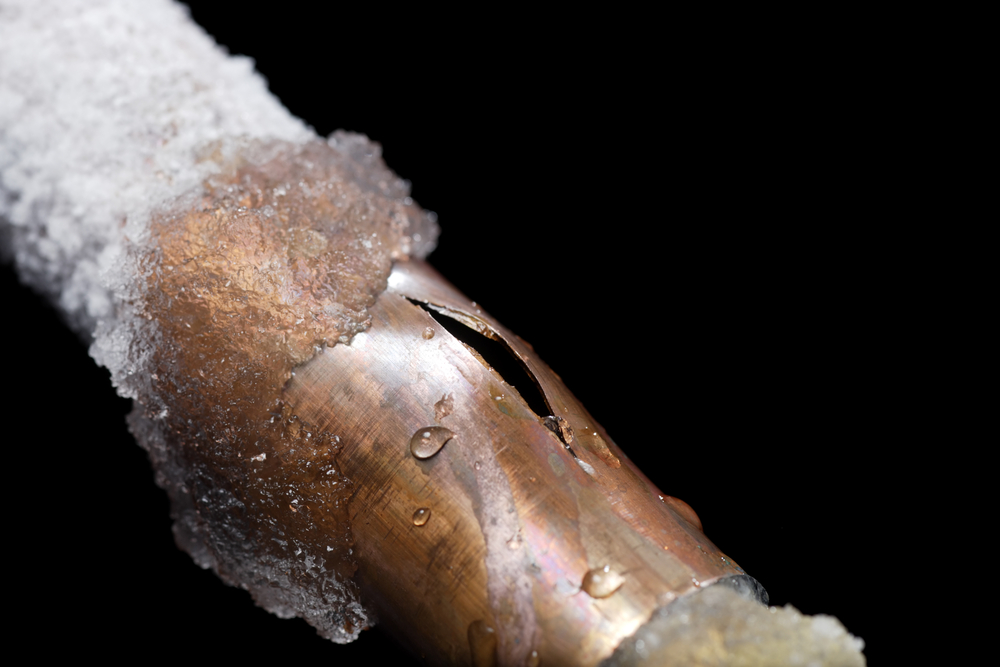We've stumbled on this article pertaining to Prevent Frozen Pipes listed below on the net and think it made good sense to share it with you in this article.

Winter can damage your pipes, specifically by freezing pipelines. Right here's just how to stop it from occurring and what to do if it does.
Intro
As temperature levels decline, the threat of icy pipes increases, possibly leading to costly repair work and water damage. Comprehending exactly how to stop frozen pipes is important for property owners in cold environments.
Comprehending Frozen Pipelines
What triggers pipes to freeze?
Pipelines ice up when exposed to temperature levels listed below 32 ° F (0 ° C) for prolonged durations. As water inside the pipes ices up, it expands, taxing the pipe walls and possibly creating them to rupture.
Threats and problems
Frozen pipes can result in water disruptions, home damages, and expensive repair services. Burst pipelines can flood homes and cause considerable structural damage.
Indicators of Frozen Pipeline
Identifying frozen pipelines early can prevent them from rupturing.
Just how to recognize icy pipelines
Try to find reduced water flow from faucets, uncommon odors or noises from pipelines, and noticeable frost on exposed pipelines.
Avoidance Tips
Protecting susceptible pipes
Wrap pipes in insulation sleeves or utilize heat tape to shield them from freezing temperature levels. Focus on pipelines in unheated or exterior locations of the home.
Home heating methods
Maintain interior rooms appropriately heated up, specifically areas with plumbing. Open up cabinet doors to enable cozy air to flow around pipes under sinks.
Securing Outdoor Plumbing
Yard tubes and outdoor faucets
Detach and drain pipes yard tubes prior to winter months. Set up frost-proof faucets or cover outdoor taps with protected caps.
What to Do If Your Pipelines Freeze
Immediate activities to take
If you believe icy pipelines, keep taps open to relieve pressure as the ice thaws. Utilize a hairdryer or towels soaked in hot water to thaw pipelines slowly.
Long-Term Solutions
Structural adjustments
Take into consideration rerouting pipes away from exterior wall surfaces or unheated areas. Add added insulation to attic rooms, basements, and crawl spaces.
Updating insulation
Purchase high-grade insulation for pipes, attic rooms, and walls. Correct insulation assists maintain constant temperature levels and minimizes the threat of frozen pipelines.
Conclusion
Stopping icy pipes needs aggressive measures and quick actions. By understanding the causes, indications, and safety nets, home owners can protect their plumbing during cold weather.
5 Ways to Prevent Frozen Pipes
Drain Outdoor Faucets and Disconnect Hoses
First, close the shut-off valve that controls the flow of water in the pipe to your outdoor faucet. Then, head outside to disconnect and drain your hose and open the outdoor faucet to allow the water to completely drain out of the line. Turn off the faucet when done. Finally, head back to the shut-off valve and drain the remaining water inside the pipe into a bucket or container. Additionally, if you have a home irrigation system, you should consider hiring an expert to clear the system of water each year.
Insulate Pipes
One of the best and most cost-effective methods for preventing frozen water pipes is to wrap your pipes with insulation. This is especially important for areas in your home that aren’t exposed to heat, such as an attic. We suggest using foam sleeves, which can typically be found at your local hardware store.
Keep Heat Running at 65
Your pipes are located inside your walls, and the temperature there is much colder than the rest of the house. To prevent your pipes from freezing, The Insurance Information Institute suggests that you keep your home heated to at least 65 degrees, even when traveling. You may want to invest in smart devices that can keep an eye on the temperature in your home while you’re away.
Leave Water Dripping
Moving water — even a small trickle — can prevent ice from forming inside your pipes. When freezing temps are imminent, start a drip of water from all faucets that serve exposed pipes. Leaving a few faucets running will also help relieve pressure inside the pipes and help prevent a rupture if the water inside freezes.
Open Cupboard Doors
Warm your kitchen and bathroom pipes by opening cupboards and vanities. You should also leave your interior doors ajar to help warm air circulate evenly throughout your home.
:strip_icc()/snow-outdoor-faucet-pipes-4af65d1e5e904fb1aa7bf74071fe5d89.jpg)
As a passionate reader about 6 Ways to Prevent Frozen Pipes, I think sharing that article was sensible. Do you know anybody else who is excited about How to Prevent Your Pipes From Freezing? Be sure share it. Thanks a bunch for your time. Don't hesitate to check our website back soon.
Book Your Appointment